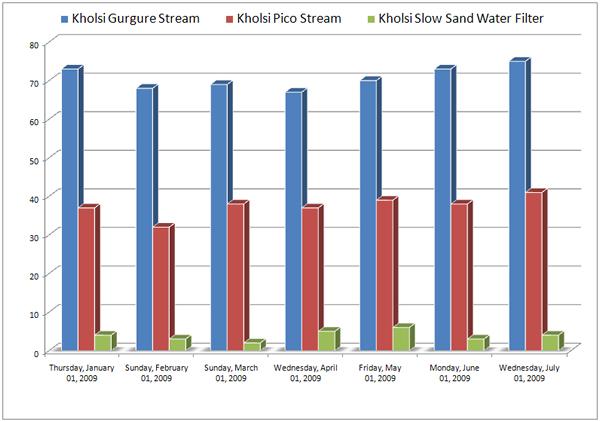| Drinking Water Testing |
 |
 |
 |
Since 2005, RIDS-Nepal is providing drinking water supply to some of the villages in Humla. There are 2-5 public water taps in each village which are drained from the water sources (Stream/Drinking Water Spring Source) near from the village and each house is provided with the Slow Sand Water Filter (SSWF). Currently 15 villages of Humla are supplied with drinking water and water from the source (stream/DWSS), public water tap and Slow Sand Water Filter is tested for Ecoli.
E.coliE.coli is a type of fecal coli form bacteria commonly found in the intestines of animals and humans. E. coli is short for Escherichia coli. The presence of E. coli in water is a strong indication of recent sewage or animal waste contamination. For the detection the E. coli in the water, the following procedure steps are necessary:
The standard drinkable water free from E.coli is 10 per 100ml for Humla. RIDS-Nepal has had tremendous success in the Slow Sand Water Filter (SSWF) project. You can view the following graph to see what we mean. The following graph is generated by gathering the data from 3 independent sources 1. Gurgure Stream 2. Pico Stream (which powers RIDS-Nepal Pico-hydro) 3. Slow Sand Water Filter. It clearly demonstrate how effective the SSWF is and you can imagine how it has affected people's lives in Kholsi Village.
TurbidityTurbidity is the cloudiness or haziness of water caused by individual particles that are generally invisible to the naked eye, similar to smoke in air. The measurement of turbidity is a key test of water quality. For the measurement of the turbidity value, following procedure steps are necessary:
If the value is less than 1000, the water is said to be clear water. If greater than 1000, the water is said to be dirty. |
